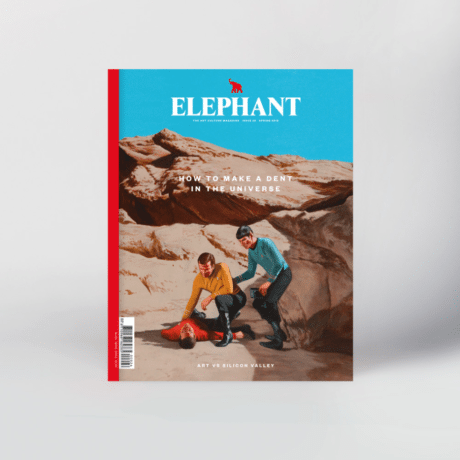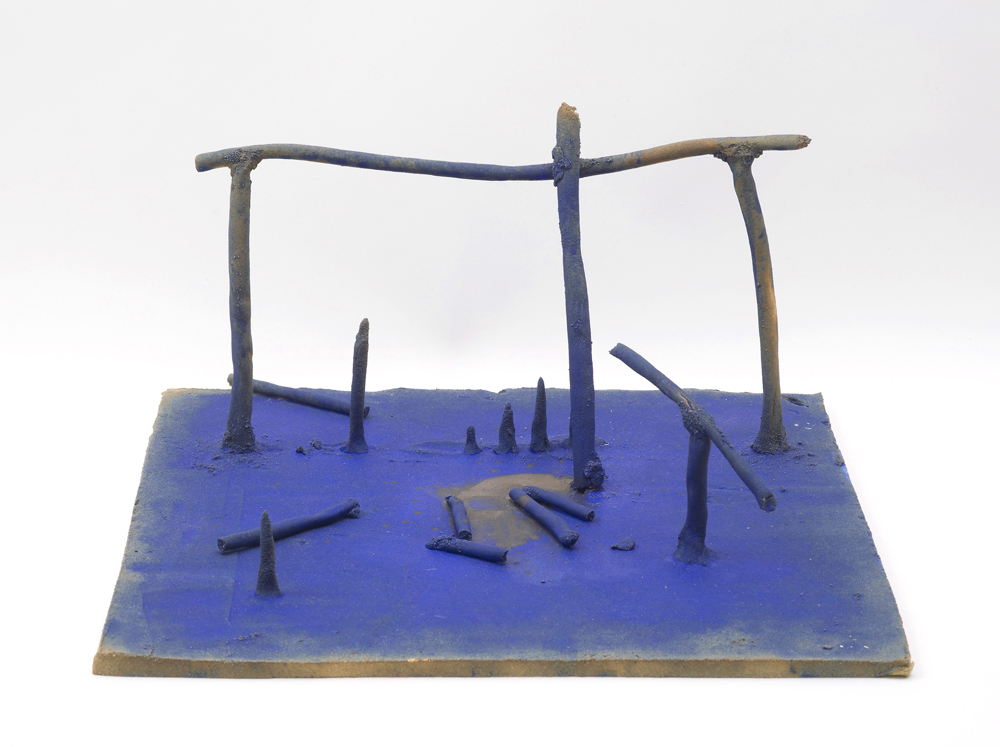
For artists, ceramic is a material that is both historically and conceptually loaded. The worn-out argument of craft versus fine art quickly rears its head in discussion. However, this uneasy relationship is proving fertile ground as artists develop new and interesting works that explore the ambiguity between functionality and pure expression. Ceramics are also proving to be a choice medium for critiquing the everyday, the domestic and the familiar. But also, in a world of immaterial imagery, ceramics provide a way of reconnecting the viewer with material and material concerns.
“Ceramic seems both unlikely and also perfectly pitched to create works that allude to the body”
Aaron Angell is an artist who has a self-confessed “shallow” interest in the ceramic tradition, preferring it for its imagery and appearance, rather than its philosophy. Appreciating ceramic for its anti-art aesthetic, Angell often uses it to produce works that allude to the hobbyist culture that ceramics are commonly associated with. Molybdenum Bell Courtyards exemplifies the bizarre landscapes of unexpected elements unified in unsettling compositions that are central to his practice. To rehabilitate his material, he occasionally dips into the vaults of art history to recreate classic works. For example, Angell reimagined a 1949 William Turnbull sculptural landscape in his Bill Turnbull’s Mobile Stabile in Barium Blue.
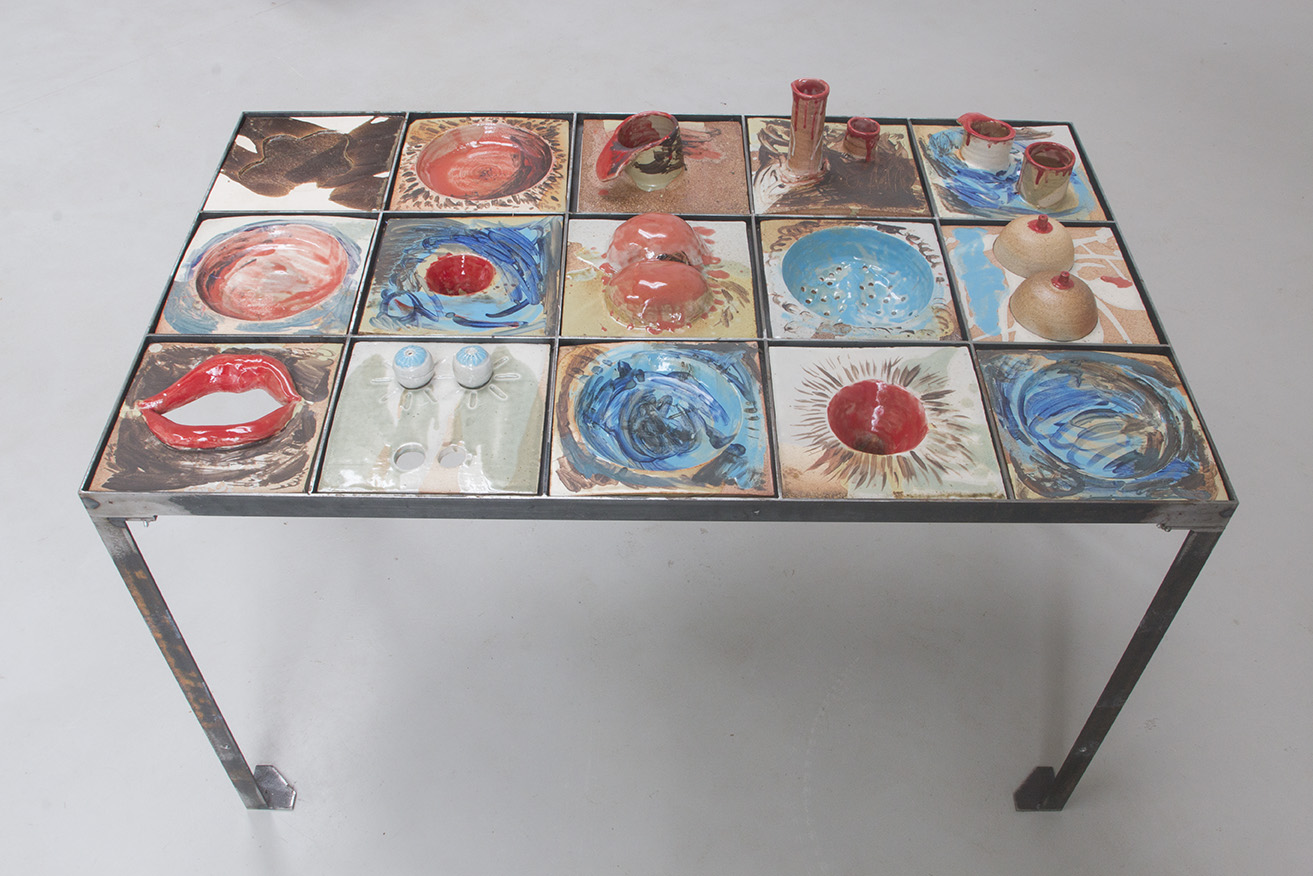
Alex Hoda also finds the surface value of this material one that allows him to develop his ongoing interest in the surrealist approach to chance that runs through his sculptural practice. In his ceramic works, he unifies this with his interest in the grotesque. Bullfish is a sculpture based on the surrealist game of the exquisite corpse, in which collaborators work together to form an image or text that developed on the previous contributor’s work. This often resulted in incongruous combinations of forms or text. In Bullfish, Hoda has combined the forms of a bulldog and a fish, creatures of the land and the sea that would never normally unite. Here they have been merged through a seemingly bizarre twist of genetic mutation. The glazing process unavoidably leaves aspects of the resulting sculpture’s appearance to chance, evoking characteristics of the land and sea.

Recent ceramic works by Laure Prouvost explore the boundaries between utility and futility. These pieces form part of her Wantee series, which takes the relationship between her grandfather and German Dada artist, Kurt Schwitters, as its starting point. Through these works she creates objects that reimagine her grandmother’s constant need to appropriate her grandfather’s art objects as domestic objects. Her recent tables such as Improving the Every-day (In Support of Grand Dad Visitor Center) are comprised of absurdist elements ranging from eyeball salt and pepper shakers to busty butter dishes to cat milk spouts. Prouvost’s ceramic tables recreate the unexpected frames of juxtaposed imagery often found in her films.
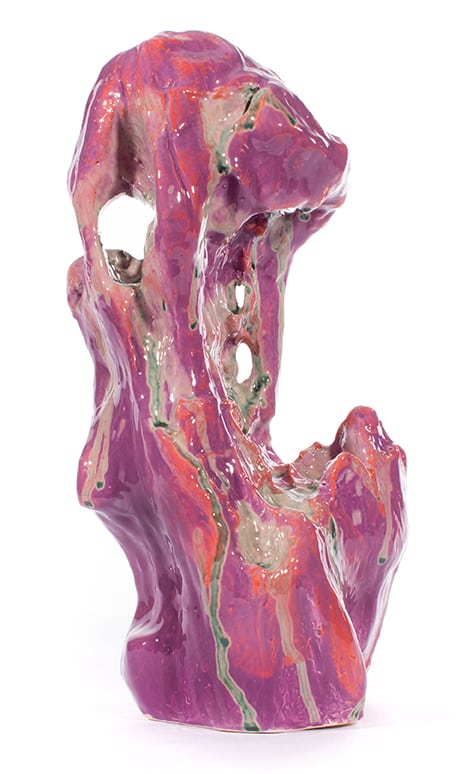
Ceramic seems both unlikely and also perfectly pitched to create works that allude to the body. In works such as The Porcelain Blushed O, ceramics allow Zoe Williams to explore the representation of seductive and illusory surfaces. Unlike other materials, ceramic has a direct corporeal relationship. The unfired clay responds directly and immediately to the artist’s body temperature and records every touch, making it a choice vehicle for sculpture about the body. Both Williams and Prouvost capitalize on the warm materiality of ceramics alongside their cool digital works in film. Williams has stated: “the use of High Definition video acts as a cold modern counterpart to the natural richness and exclusivity of my crafted objects, enforcing a sense of uneasy temporal fusion of epochs and materials.”
Jesse Wine also finds the immediacy that clay provides to be one of the most engaging reasons for working with it. In archaeological research investigating the history of ceramic works, forensic fingerprint technology is often employed to learn a bit more about the maker of the work. Wine’s works are often clever and humorous approaches to the material world we live in, JW I’ve Got Nothing to Offer?? has a multilayered self-awareness. It is a work about making work, but also it is a work that records its own production in the most material of ways. Wine’s fingerprints are used to pinch seams around the structure. These pinches record his fingerprints, ensuring that any questions of authorship can be overruled with a small bit of forensic evidence.
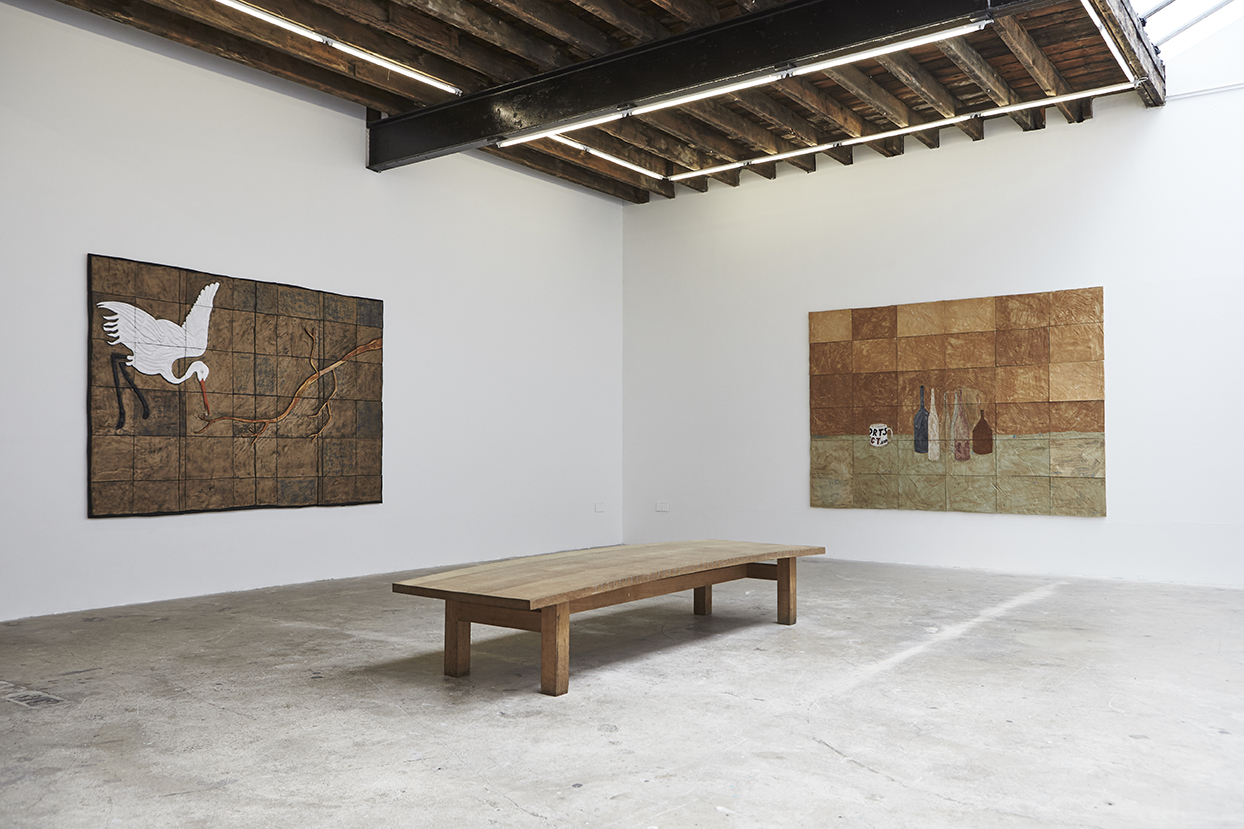
In direct opposition to this, the Grantchester Pottery, established by Giles Round and Phil Root, plays with questions of authorship. Inspired by the modernist artist studios such as the Omega Workshop, the Grantchester Pottery produces works that question the relationship between fine and decorative arts. Artists and designers work together to produce works that contribute to a collective output. In their 2013 exhibition, Artist Decorators, at the Institute of Contemporary Art in London, ceramics were combined with murals, wallpaper and furniture to investigate where decoration stops and fine art starts. The works of the Grantchester Pottery continue to investigate the legacy of artists’ workshops and questions of collaborative practice in working today. This way of working allows for a fluid exchange of ideas and forms.
“Ceramics have come a long way since the potter’s wheel”
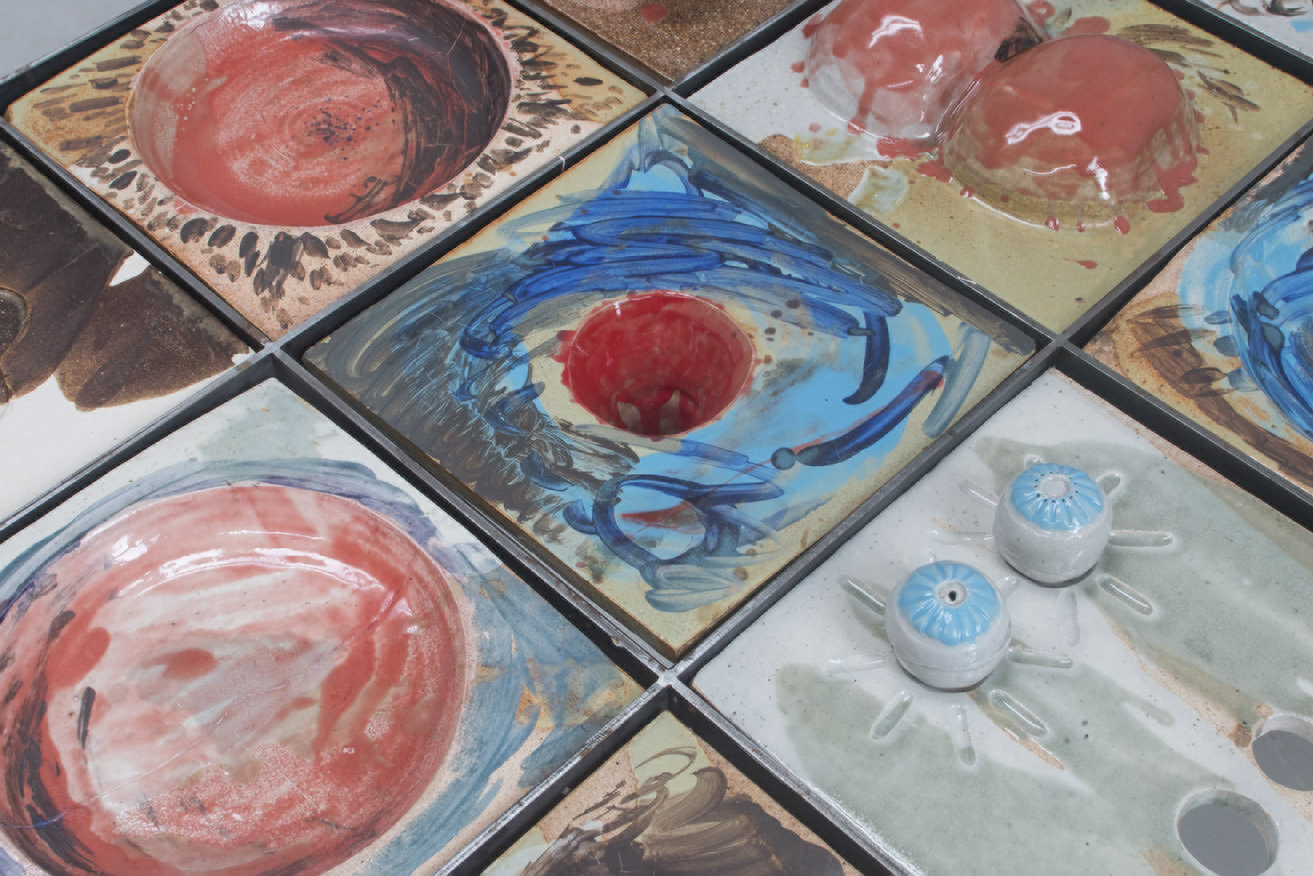
In fact, many artists working in ceramics seem to have a collaborative approach to working with other artists. It may be that the material itself cultivates such specialist knowledge that working with other artists creates a community in which artists value an exchange of knowledge about clays, glazes and firings.
Aaron Angell developed Troy Town Pottery as a ceramic workshop for artists, providing a place to work that operates outside traditional modes of ceramic production. Artists are invited to undertake residencies at Troy Town and to share their knowledge with one another throughout the process. Furthermore, Angell has developed an extensive glaze library to encourage artists to learn new techniques and to experiment with new materials.
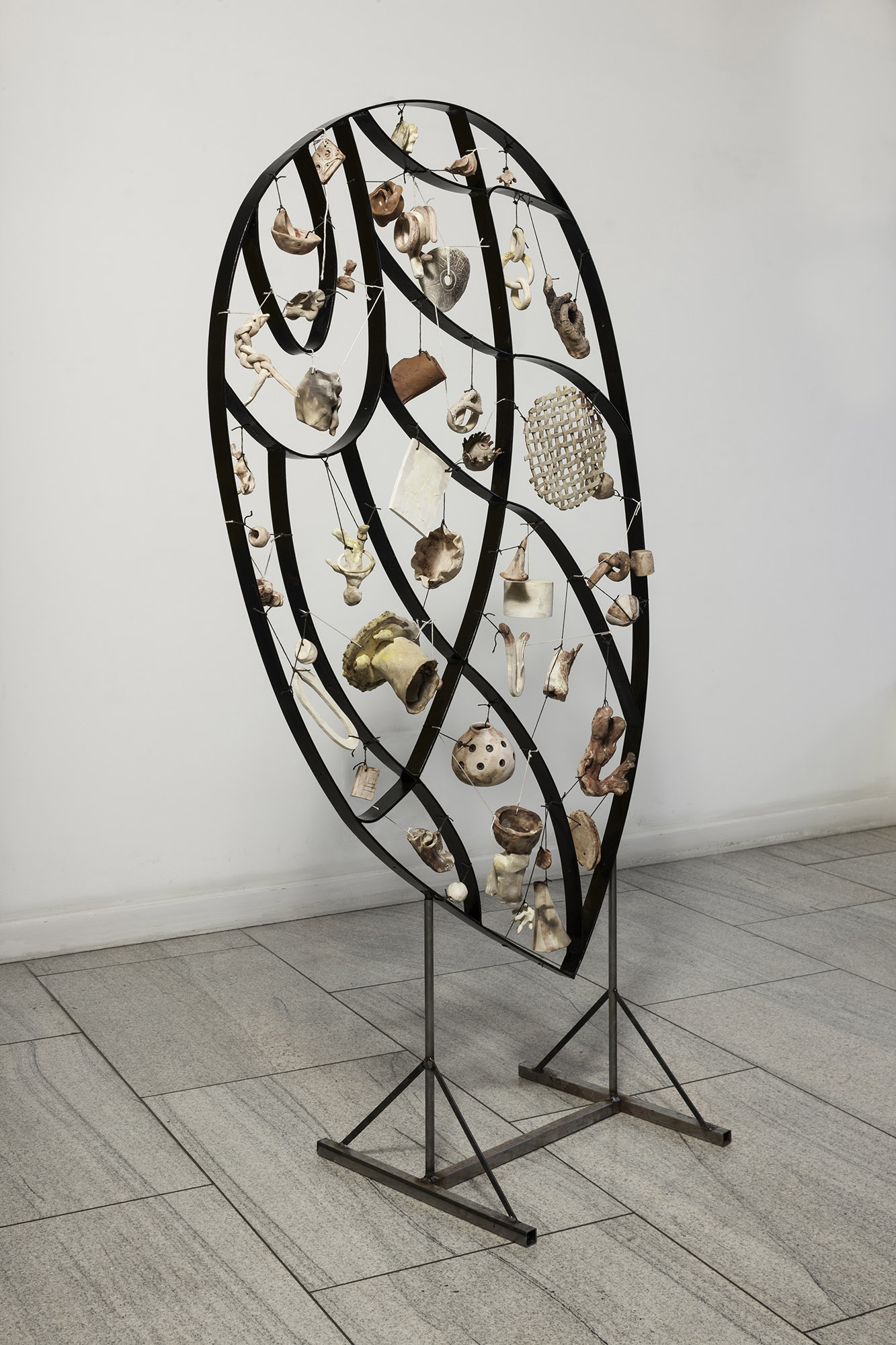
In 2014, Laura Aldridge and Anna Mayer constructed a portable kiln for Glasgow International. They invited local artists and practitioners to contribute new works to the kiln. There is an undeniable social aspect to making work like this. Ever Open Openings/Ever More Open Openings/The Expanded Vessel is a sculpture composed of the variety of works fired in this kiln in 2014 by numerous artists. The firing was imagined as a ritualistic process: sage was burned by curator Alhena Katsoff, a poem was read by Quinn Latimer who lowered a ceramic microphone into the kiln, and a work by Thomas Clark was performed by several participants. These events, together with the ceramic works fired, were considered offerings, and the results form the sculptural work. It therefore acts as a record of the firing and as a type of social sculpture by incorporating objects from multiple collaborators.

In 2015, Alex Hoda and Robert Rush proposed a new “open-source” sculpture for Cass Sculpture Foundation in the form of a wood-fired kiln. This year, eleven contemporary artists working with ceramics fired new works in the kiln for an exhibition entitled Rough Music. Over the years, the kiln will build a wider community of contemporary artists whose works in ceramics can be fired collaboratively.
The artists above offer just a few examples to the varying approaches to “throwing shapes”. Contemporary artists are investigating the historical use of ceramics and the relationship of this material to craft in new and interesting works. It is also being embraced for its flexibility, economy, immediacy and accessibility. Furthermore, its use as a vehicle for collaborative practice and community building is being explored. Contemporary ceramics have come a long way since the potter’s wheel.
This feature originally appeared in issue 26
BUY NOW